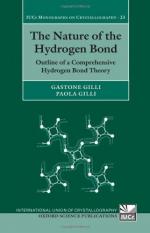|
This section contains 1,512 words (approx. 6 pages at 300 words per page) |

|
A hydrogen bond results from an interaction between two electronegative atoms (usually oxygen, nitrogen, or fluorine) and a hydrogen atom which is covalently bonded to one of them.Electronegativity is a measure of the ability of an atom to attract and hold electrons. It can be expressed as an average of the ionization potential (the minimum amount of energy necessary to remove an electron completely from the outer electron shell of an atom) and the electron affinity of the atom (the energy given off when a neutral atom acquires an electron).
A covalent bond between two atoms is formed by each atom contributing an electron to a molecular orbital that includes both atoms. The two atoms forming the bond share these two electrons. The shared electrons in a covalent bond between a highly electronegative atom (such as oxygen, nitrogen, or fluorine) and a hydrogen atom are...
|
This section contains 1,512 words (approx. 6 pages at 300 words per page) |

|


